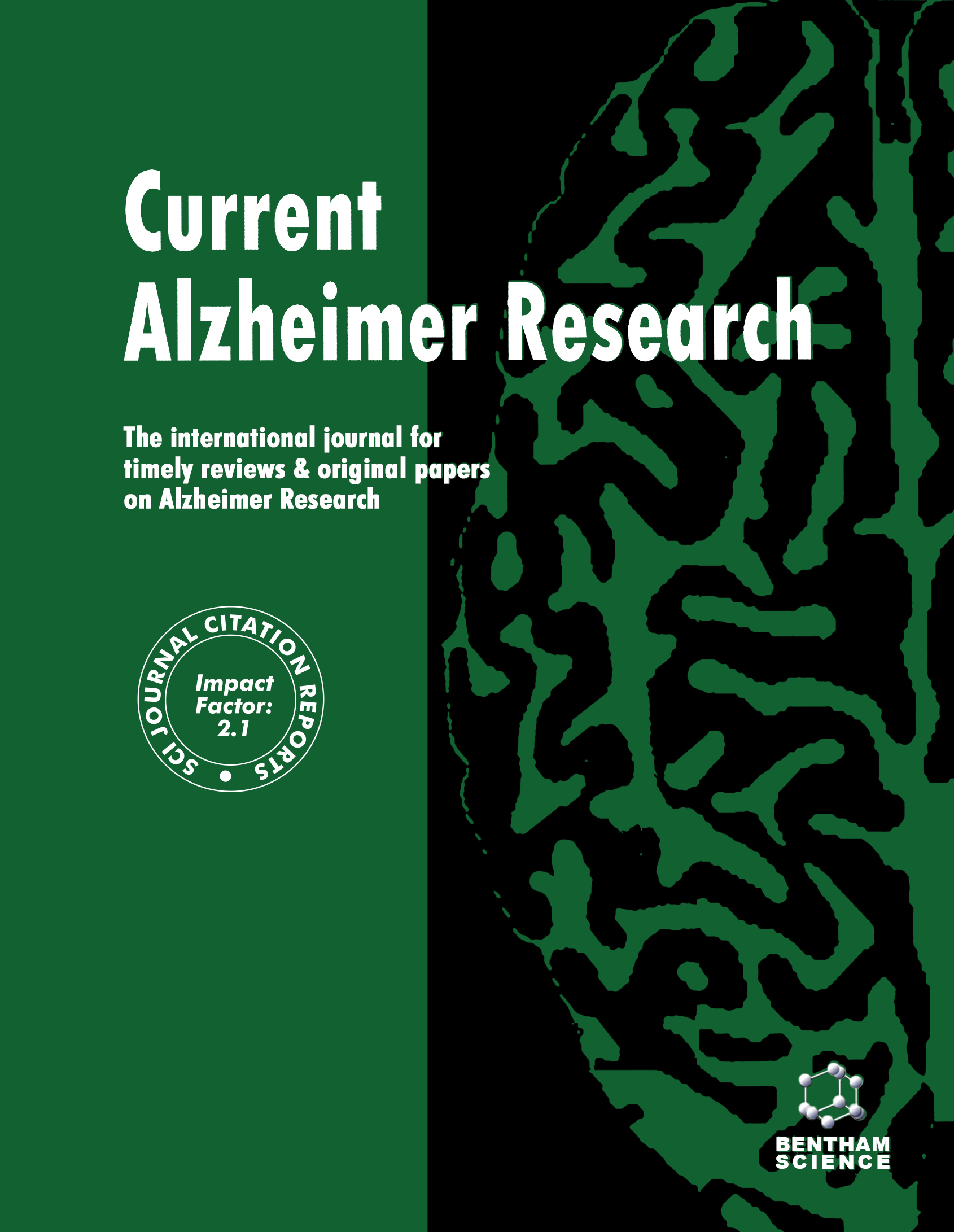- Home
- A-Z Publications
- Current Alzheimer Research
- Previous Issues
- Volume 18, Issue 6, 2021
Current Alzheimer Research - Volume 18, Issue 6, 2021
Volume 18, Issue 6, 2021
-
-
The Janus-like Association between Proton Pump Inhibitors and Dementia
More LessEarly pharmacoepidemiological studies suggested that Proton Pump Inhibitors (PPIs) might increase the risk of Alzheimer’s Disease (AD) and non-AD related dementias. These findings were supported by preclinical studies, specifically stressing the proamyloidogenic and indirect anticholinergic effects of PPIs. However, further large-scale pharmacoepidemiological studies showed inconsistent results on the association between P Read More
-
-
-
Interaction of Exogenous Butyrylcholinesterase with β-Amyloid Plaques in 5XFAD/Butyrylcholinesterase-Knockout Mouse Brain
More LessAuthors: G.A. Reid and S. DarveshBackground: In Alzheimer’s disease (AD), and amyloid models such as the 5XFAD mouse, butyrylcholinesterase (BChE) is associated with β-amyloid (Aβ) plaques and has unique biochemical features which distinguish it from that found in neurons. It has been suggested that BChE associated with Aβ plaques may be involved in the maturation of this structure and thus disease progression. Objective: Currently, it is unknown whether Read More
-
-
-
Determinants of Cognitive Trajectories in Normal Aging: A Longitudinal PET-MRI Study in a Community-based Cohort
More LessBackground: The determinants of the progressive decrement of cognition in normal aging are still a matter of debate. Alzheimer disease (AD)-signature markers and vascular lesions, but also psychological variables such as personality factors, are thought to have an impact on the longitudinal trajectories of neuropsychological performances in healthy elderly individuals. Objective: The current research aimed to ide Read More
-
-
-
Education, APOE 4, and Cognition in Individuals with Subjective Cognitive Decline with Worry in the SILCODE Study
More LessAuthors: Guanqun Chen, Li Lin, Kun Yang and Ying HanBackground: Education could offer a protective effect on cognition in individuals with Subjective Cognitive Decline (SCD), which is considered to be the early stage of Alzheimer’s Disease (AD). However, the effect of education on cognition in SCD individuals with SCD-plus features is not clear. Objective: The aim of the study was to explore the effect of education on cognition in SCD individuals with SCD-plus features. Methods: A Read More
-
-
-
Predicting Neuropsychiatric Symptoms of Parkinson’s Disease with Measures of Striatal Dopaminergic Deficiency
More LessAuthors: Ram Bishnoi, Marina C. Badir, Sandarsh Surya and Nagy A. YoussefBackground: The role of nigrostriatal dopaminergic neurons degeneration is well established in the pathophysiology of Parkinson’s disease. However, it is unclear if and how the degeneration of the dopamine pathways affects the manifestation of the neuropsychiatric symptoms (NPS) of Parkinson’s Disease (PD). Dopamine transporter (DAT) imaging, a technique to measure the reduction in dopamine transporters is incre Read More
-
-
-
Association of Polymorphisms of the Tissue Inhibitors of Metalloproteinases- 1 and -2 with Alzheimer’s Disease in Taiwan
More LessAuthors: Wei-Min Ho, Yun-Shien Lee, Chiung-Mei Chen, Yah-Yuan Wu, Wen-Chuin Hsu, Yu-Hua Huang and Yi-Chun ChenBackground: Alzheimer’s disease (AD) leads to progressive neuronal loss and cognitive and behavioral decline in the aging population. Matrix metalloproteinases (MMPs) and associated tissue inhibitors of metalloproteinases (TIMPs) are involved in remodeling the extracellular matrix. Amyloid beta-42 interrupts the integrity of the neurovascular unit and induces a toxic reaction affecting neurons. Objective: This study in Read More
-
-
-
Functional Connectivity Alterations Based on the Weighted Phase Lag Index: An Exploratory Electroencephalography Study on Alzheimer’s Disease
More LessAuthors: Yi Yan, Aonan Zhao, Weina Ying, Yinghui Qiu, Yanfei Ding, Ying Wang, Wei Xu and Yulei DengObjective: Numerous electroencephalography (EEG) studies focus on the alteration of electrical activity in patients with Alzheimer’s Disease (AD), but there are no consistent results especially regarding functional connectivity. We supposed that the weighted Phase Lag Index (w- PLI), as phase-based measures of functional connectivity, may be used as an auxiliary diagnostic method for AD. Methods: We enrolled 30 patients wit Read More
-
-
-
Clinical, Neuropsychological, and Neuroimaging Characteristics of Amyloid- positive vs. Amyloid-negative Patients with Clinically Diagnosed Alzheimer’s Disease and Amnestic Mild Cognitive Impairment
More LessAuthors: Yue Wang, Fanghua Lou, Yonggang Li, Fang Liu, Ying Wang, Li Cai, Marc L. Gordon, Yuanyuan Zhang and Nan ZhangBackground: A significant proportion of patients with clinically diagnosed Alzheimer’s Disease (AD) and an even higher proportion of patients with amnestic mild cognitive impairment (aMCI) do not show evidence of amyloid deposition on Positron Emission Tomography (PET) with amyloid-binding tracers such as 11C-labeled Pittsburgh Compound B (PiB). Objective: This study aimed to identify clinical, neuropsychological an Read More
-
Volumes & issues
-
Volume 21 (2024)
-
Volume 20 (2023)
-
Volume 19 (2022)
-
Volume 18 (2021)
-
Volume 17 (2020)
-
Volume 16 (2019)
-
Volume 15 (2018)
-
Volume 14 (2017)
-
Volume 13 (2016)
-
Volume 12 (2015)
-
Volume 11 (2014)
-
Volume 10 (2013)
-
Volume 9 (2012)
-
Volume 8 (2011)
-
Volume 7 (2010)
-
Volume 6 (2009)
-
Volume 5 (2008)
-
Volume 4 (2007)
-
Volume 3 (2006)
-
Volume 2 (2005)
-
Volume 1 (2004)
Most Read This Month
Article
content/journals/car
Journal
10
5
false
en

Most Cited Most Cited RSS feed
-
-
Cognitive Reserve in Aging
Authors: A. M. Tucker and Y. Stern
-
- More Less

